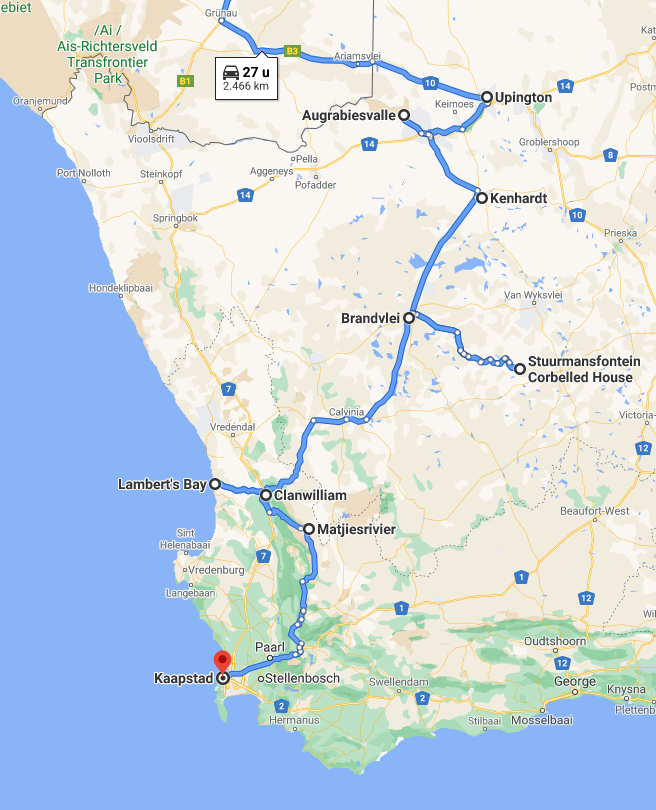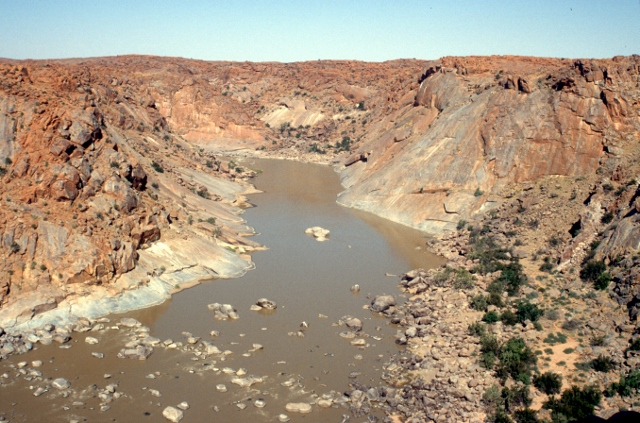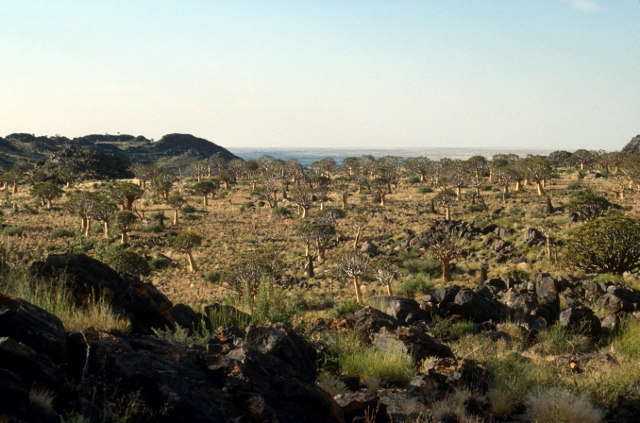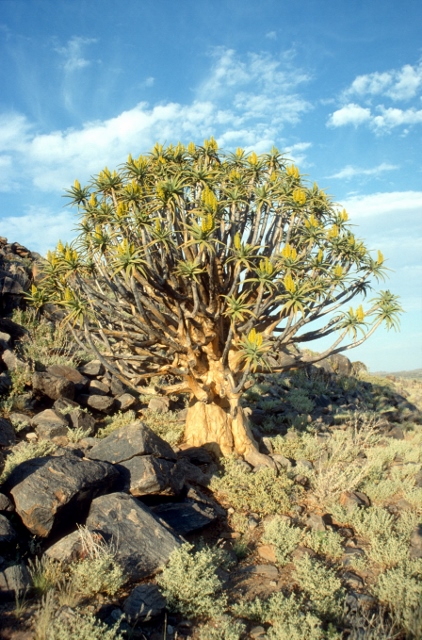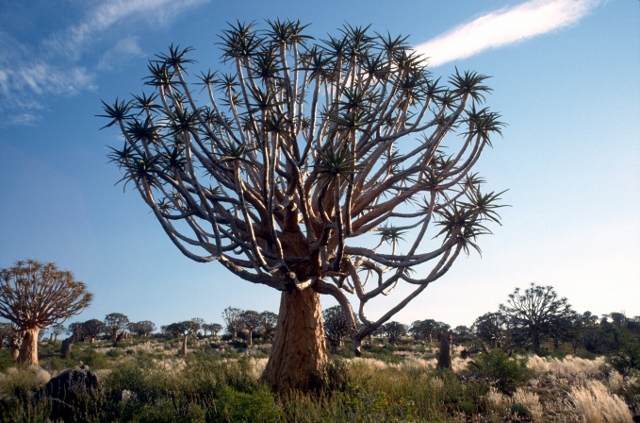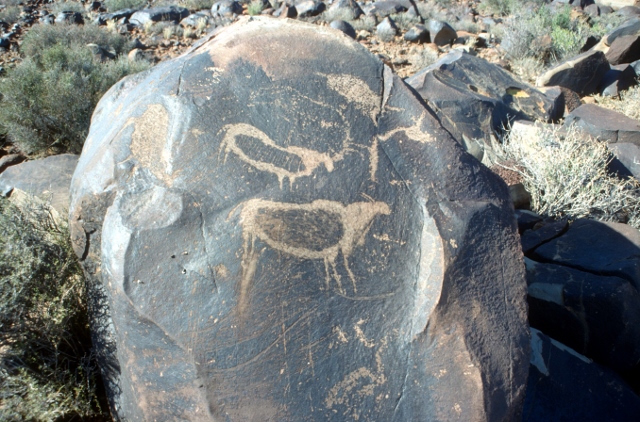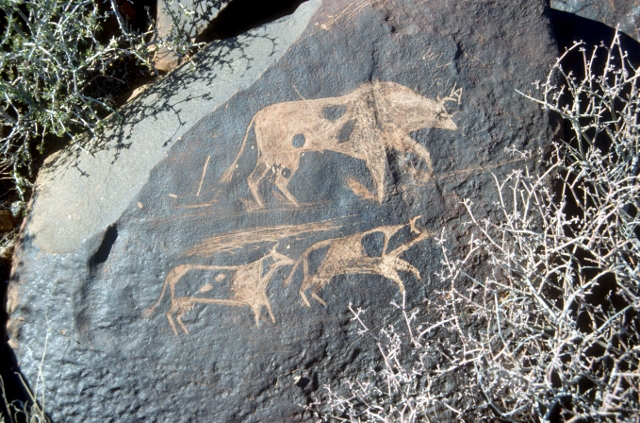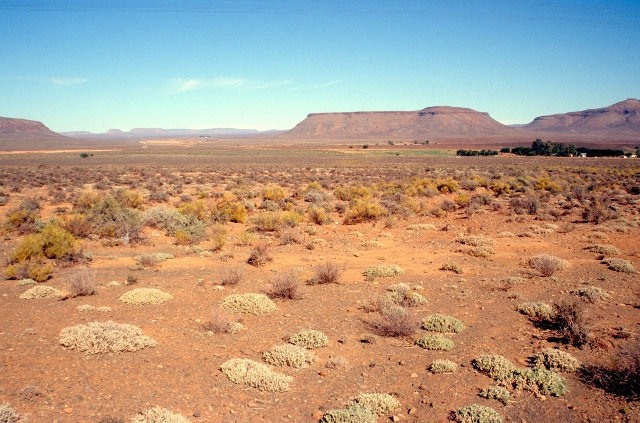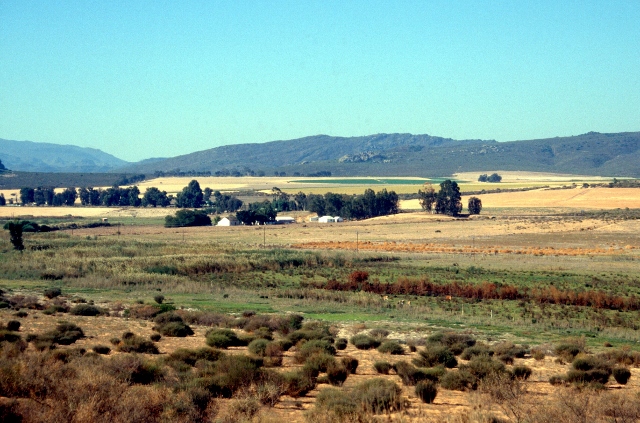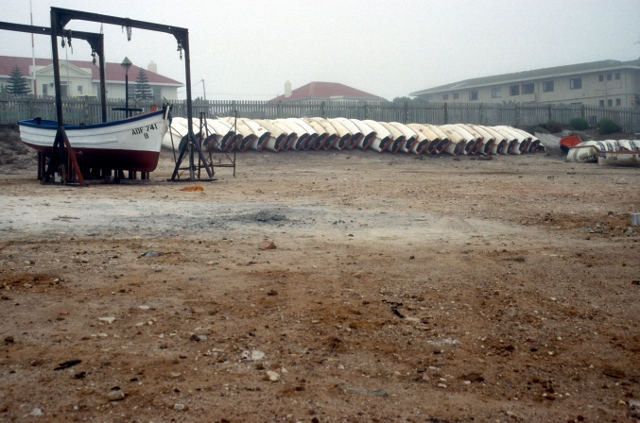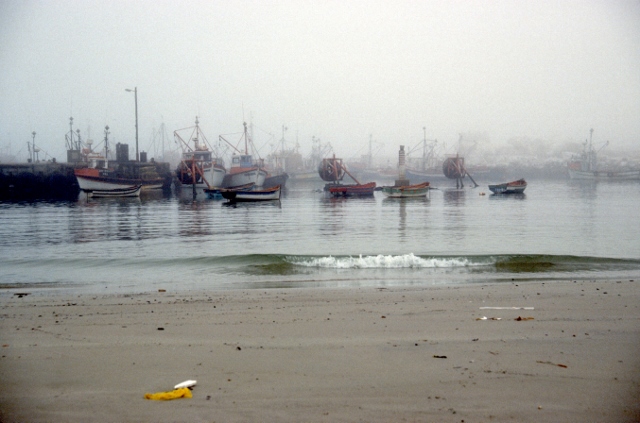May 6th, 1991 – Upington
I entered South Africa in the middle of the night. The luxury touring I boarded in Windhoek, the capital of Namibia, came with “refreshments, hot and cold meals and videos”, which meant two small cartons of apple juice, a meal you had to order yourself in a grubby restaurant halfway, during a 45 minute stop in Keetmanshoop, and a free viewing of The Sound of Music. As I sat next to a white Namibian lady who only spoke German, whilst the hostesses on the bus – the ones who distributed the apple juice – only spoke English or Afrikaans, I spent a significant part of the 11 hour journey translating the most trivial questions in English, and the increasingly irritated answers back into German.
I got off in Upington, the first town inside South Africa at two in the morning – I was the only one to get off, the rest of the passengers continued to Johannesburg. Based on earlier experience I feared not being able to get into the hotel so late at night, but I didn’t have to worry. This is South Africa, a notch, or a few notches, up from Zimbabwe and Namibia: the hotel was open, the receptionist was awake, and I got my room in no time.
The next morning I called the car rental company, who dropped the car at the hotel 15 minutes later, completed all the paper work in another 5 minutes, and I was ready to go. Again, quite a difference from my earlier renting cars, this trip, which often took hours to arrange.
May 7th – Brandvlei
From Upington I drove west, along the Orange River. Nice to see water again, and a green valley, trees, reeds, and agriculture, after the weeks of dry landscape and desert in Namibia. And immediately, with water and cultivation, come the people, the houses, and possibly more cars in a morning than I had seen on my entire Namibia trip.
Except that the green valley is limited to the river banks, outside the Augrabies Falls National Park, which was the target for the afternoon. Inside the park, bare rocks again. The main attraction of the park is the Augrabies Waterfall, where the Orange River drops some 56 meters down. True to form – this is South Africa – there is a restaurant, a tourist office and a souvenir shop near the falls, and to reach the falls there is a path over the boulders, complete with stairs constructed where it gets a little steeper, and easy steps made of rocks perfectly cemented together.
South of the park I drive through a landscape of rolling hills and yellowish, hard grass – probably not very tasty, because I didn’t see many animals – to Kenhardt. Just outside town is another Quiver Tree Forest, similar to what I had seen in Keetmanshoop in Namibia, but then ten times bigger. These are magnificent trees, and quite a few were blooming, with big, yellow flowers. Beautiful! But what is different here, is that I only saw mature trees, unlike earlier in Keetmanshoop, where small, younger trees were also numerous. I suppose this has something to do with the sign “quiver trees for sale”, complete with telephone number, which I saw just outside the forest area.

May 8th – rock engravings and corbelled houses

Leaving the farms with engravings behind, I drove to a place called Stuurmansfontein. I had once seen a photograph of the so-called corbelled houses that occur here, igloo-like or beehive-like structures built by the early settlers of the Karoo. It took me a while, after much searching and asking around – these things are somehow not signposted – but at the end of the day I did find a couple of them, built of rows of stone, in ever smaller circles, until a single stone can close the hut at the top. Quite an ingenious construction.
In the hotel in Brandvlei I got to talk to somebody who claimed that nearby, at several of the farms, there were lots of rock paintings. I hadn’t heard of those before, so I decided to go and explore those in more detail. I managed to find the first farm, or at least a miniature name plate along the road, and a dirt track inside. With a gate. So I got out of my car, opened the gate, drove through, got out again to close the gate, and continued. After another few hundred meters, next gate. And third. Until I finally reached the farm house, where a young woman who only spoke Afrikaans explained to me where to go to see the paintings. Right! For a Dutchman Afrikaans is intelligible, rooted as it is in the Dutch language of 400 years ago, but she spoke it much too fast. Repeating the question didn’t help, as she would only speak louder, and even faster. So off I went, in the direction I though was the right one, only to get back to the farm in despair half an hour later. Where the woman pointed at a little hill, five minutes’ walk away. In the opposite direction of where I had gone.
But where I had expected a series of delicate Bushman paintings on the rock faces, similar to the ones I had seen in Zimbabwe and Namibia, I only encountered some rough engravings, of little artistic value, and on top of that, heavily vandalised by people who had put their names on the rocks, or their initials, some dates, and other useless scratches. I got to talk to another farmer, at another farm, who claimed that these engravings were not from Bushmen, but from Boer soldiers who fought the British in one of the many wars that had played out here in the previous century, and who were stationed on the hill. Yet, I believe the animal engravings are most likely done by Bushmen, similar to the ones I found in Namibia; the graffiti may well be from the Boer soldiers, remnants of Boer boredom some 100 years ago. Sadly, although they may not have been as skilful as the Bushmen in their artistic expressions, they were a lot more skilful at exterminating them, the original inhabitants of this part of Africa, of whom very few remain.
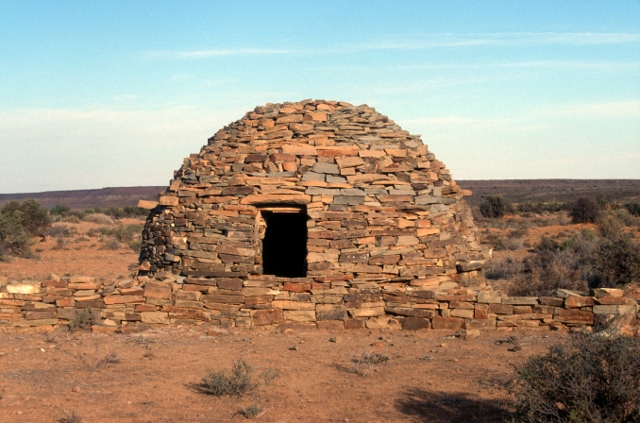

May 9th – Clanwilliam
Change of scenery: from the dry plains of the Karoo, around Brandvlei, I drove into the mountains, across two passes, and down to Clanwilliam, where life is a lot greener again. This is tea-growing country, one of the loveliest colours of green I know.
Not having seen the sea for a while, I decided to get to coast first, a short drive from town. Lambert’s Bay is a small, unassuming fishing village. Strikingly, however, here again rules the fog, resulting from the cold water Benguela stream running along the coast, whilst a few hundred meters land inward there is bright sunshine.
next: to the rock paintings of the Cederberg

